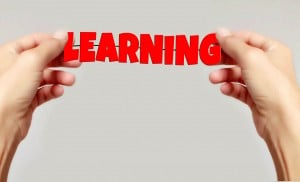 Time, support, and approach make all the difference in effective professional development for your most valuable resource in education — your teachers.
Time, support, and approach make all the difference in effective professional development for your most valuable resource in education — your teachers.
We are well into the month of May and Memorial Day is just around the corner. This time of year takes on a completely different meaning when considering a student or teacher's perspective.
Depending on the grade level, students may be thinking of anything from summer camp to volunteer work or maybe even some extra hours at a part time job. On the other hand, teachers are looking forward to organizing this years’ classroom, completing end of year assessments, and thinking about the next year. In the middle of all this is professional development. Summer is typically the time for educational, professional development.
Professional development has taken on huge importance, and relevance, since the introduction of Common Core. School districts are being asked to continuously improve student performance by measuring and marking a student’s progress along the way. While there is a high need for professional development many are not sure where to start.
Recent studies have highlighted that “effective” professional development needs to be presented, supported, and personalized to be meaningful, embraced, and internalized. Research conducted by the Centers for Public Education highlighted findings on these 5 key principles:
Duration of Professional Development
The duration needs to be significant and on-going. A one day seminar or conference without repeated opportunity for continuous reinforcement. This recommendation comes with inherent challenges of the need to carve out teacher time, but the study shows the importance of ongoing development pointing to success.
Need for Teacher Support
Teacher support during the implementation stage to adequately effect change in the classroom is fundamental. Coaching post introduction of a new concept has proven to be beneficial.
Initial Exposure Needs to Be Engaging
Teacher’s initial exposure to the concept should be engaging and not passive.
Similar to teaching students and understanding that active engagement is a barometer for adoption and long term retention, teachers being introduced to new concepts and being required to use newly minted skills will be most successful when taught with hands on learning rather than just isolated one way pushing of information.
Expert Demonstration
Demonstration or modelling is shown to be highly effective. Having the ability to observe a teacher, well versed and experienced in a particular teaching method, is preferable and increases the likelihood of adoption. Seeing, listening, and doing appeals to all learning styles.
Relevant Content
The content presented needs to be relevant to teacher groups (subject area and age groupings). Presenting material that is specific and unique to a teacher makes good sense. Training at the 20,000 feet won’t help a teacher in the long run.
Bill and Melinda Gates Foundation took research one step further by taking the teachers’ perspective. In essence, what did they feel that made the most sense. It is most important to ask the learner (the teacher) how he or she believes that they will be most successful in learning, retaining and adopting new skills that again, will eventually lead improvement in student performance.
Happily, what the teachers seek to closely align with the 5 Principles for Effective Professional Development
Relevancy
Teachers stressed their need to have training that related to what they are teaching. Moreover, the approach needed to be personalized. Generalized delivery wasn’t nearly as effective.
Interactive
This expressed need of the hands on and not merely didactic approach parallels what we know about how people learn best.
Delivery Counts
The selection or the trainer was just as important as the approach. Teachers valued delivery by a respected colleague. Information is best received when presented by someone who has seen and done it in their classroom. Development becomes less of a power point moment and more of a “Here’s what worked, here’s what didn’t.”
Time and Support
We’ve heard it once and we’ve heard it again. Teachers need support and encouragement over time. It takes time to practice and incorporate new thinking, methods and content. Time span needs to encompass at least one semester, maybe even one full year. Time is everyone’s barometer for accomplishment, carving out time and showing support to your teaching teams makes the best sense for long term success.
Treat teachers as professionals
According to the US Department of Education there are over 3.7 million teachers in the United States, they are all professionals. In order to advance our students, we need to treat our teachers are professionals when engaging them in professional development.
It takes time and a thoughtful and ever evolving approach to realign and develop your professional development strategies into something that will truly address improving student performance, remember the five principles and incorporate what you know about how to best train our teachers.





Leave a Comment